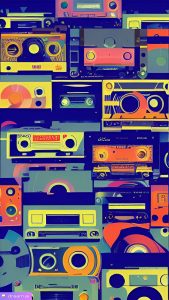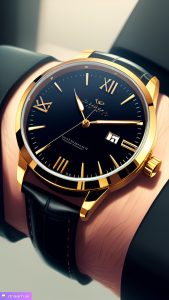 In a 1992 TED talk, the writer Michael Crichton contrasted two hotels in Hawaii, the Hyatt Waikoloa and the Kona Village. The former is a large hotel complex with modern technology and a focus on creating a controlled environment with artefacts from different periods of history. The latter is a smaller, more traditional hotel with no modern amenities, such as telephones, air conditioning, or room service. Crichton emphasises that the Kona Village is more expensive than the Hyatt Waikoloa because people are willing to pay more to escape from the technology and multimedia they are constantly surrounded by in their daily lives. He argues that there is value in unplugging from technology and immersing oneself in a natural and traditional environment, even if it means giving up some of the conveniences of modern life.
In a 1992 TED talk, the writer Michael Crichton contrasted two hotels in Hawaii, the Hyatt Waikoloa and the Kona Village. The former is a large hotel complex with modern technology and a focus on creating a controlled environment with artefacts from different periods of history. The latter is a smaller, more traditional hotel with no modern amenities, such as telephones, air conditioning, or room service. Crichton emphasises that the Kona Village is more expensive than the Hyatt Waikoloa because people are willing to pay more to escape from the technology and multimedia they are constantly surrounded by in their daily lives. He argues that there is value in unplugging from technology and immersing oneself in a natural and traditional environment, even if it means giving up some of the conveniences of modern life.
Nature itself is analog, but we live in an increasingly digital world. While we’ve had a form of digital computation for thousands of years – clockwork devices – since the invention of the transistor in the 1940s digital computers have spread around the world, and since around the turn of the 21st Century our culture – film, photos, music, writing – has become mostly digital. Digital computers are superior than their analog equivalents at storing information – hence even nature uses a digital system to transmit information over vast tracts of time: DNA. But the analog computing paradigm – the road we’ve abandoned, at least for the time being – can be better at mapping reality in real time (See the book ‘Analogia’ by George Dyson for more discussion of these differences).
Yet, in an era where digital innovations have become increasingly prevalent, it’s fascinating to witness a resurgence of interest in analog technologies. In the UK, sales of analog music formats, such as vinyl records and cassette tapes, are dramatically on the rise. People are also gravitating toward old-style mechanical computer keyboards, which offer greater key travel depth, adding to the tactile experience. Furthermore, analog experiences like visiting food markets provide a level of unpredictability that is often missing in the digital world. There is also a trend towards unplugging from technology for limited periods of time, like one day a week. This is often paired with getting back out into natural environments.
One of the reasons why we love being in nature and find it calming is possibly because the ‘design’ of natural vistas – plants, mountain ranges, forests etc – has an in-built patterns. Its built around mathematical patterns like the Fibonacci sequence and fractal patterns. These patterns might give our subconscious minds something to process, keeping these views and images interesting to us, even though we don’t quite know why. In contrast, the angular regularities of our urban environments and computer screens are ridiculously simple and boring. The planned and digital world is compressed, while nature is richer. Like the warmer, richer sound from vinyl records.
So, what is it about analog technologies that continue to captivate us?
 Nostalgia: A Connection to the Past
Nostalgia: A Connection to the Past
One of the most powerful drivers behind our enduring love for analog technologies is nostalgia. The tactile and sensory experiences associated with vinyl records, cassette tapes, mechanical keyboards, and bustling food markets evoke a sense of connection to the past. For many, these technologies and experiences represent a simpler time and offer a comforting escape from the complexities of modern life.
Sensory Experience: Engaging with Our Surroundings
Analog technologies and experiences often provide a richer, more engaging sensory experience than their digital counterparts. Vinyl records produce a unique warmth and depth of sound that many audiophiles argue is unparalleled by digital formats. The tactile satisfaction of typing on a mechanical keyboard or browsing through a bustling food market engages our senses in a way that is difficult to replicate in the digital realm.
In the realm of audio, many enthusiasts argue that analog technologies produce a superior sound quality compared to digital formats. Vinyl records, for example, are said to deliver a richer, more authentic listening experience due to their continuous audio waveform. This contrasts with digital audio files, which are based on discrete samples that can result in a less natural sound.
The warmth and depth of analog audio can evoke an emotional connection that digital formats may struggle to replicate. This connection is amplified by the tactile experience of engaging with analog devices, as well as the nostalgic associations they carry. For many, the sound of analog transports them to a different time and place, creating an immersive, emotional experience that transcends mere audio playback.
Aesthetics and Imperfections: The Beauty of Authenticity
Analog technologies are often characterized by their imperfections, which can contribute to their aesthetic appeal. The slight crackle of a vinyl record or the charming imperfections of a film photograph add a layer of personality and authenticity that many find appealing.
These imperfections can also encourage creativity and experimentation. For instance, film photographers must learn to work with the constraints of their medium, leading to the development of innovative techniques and a greater appreciation for the art form. The limitations of analog technologies can inspire users to push boundaries and discover new ways of expression, making the process all the more rewarding.
Durability and Longevity: Built to Last
 Analog devices are often praised for their durability and longevity, qualities that can be lacking in digital technologies. Many analog devices, such as mechanical watches and film cameras, are built with robust materials and designed to withstand the test of time. This stands in stark contrast to the rapid obsolescence of many digital products, which can become outdated or fail within a few short years.
Analog devices are often praised for their durability and longevity, qualities that can be lacking in digital technologies. Many analog devices, such as mechanical watches and film cameras, are built with robust materials and designed to withstand the test of time. This stands in stark contrast to the rapid obsolescence of many digital products, which can become outdated or fail within a few short years.
The longevity of analog technologies not only makes them more sustainable but also contributes to their appeal. There is a certain satisfaction in knowing that an analog device, lovingly maintained and cared for, can be enjoyed for decades, or even passed down through generations. This enduring quality further strengthens the emotional connection many people have with analog technologies.
Unpredictability and Variety: The Thrill of Discovery
Digital computation give you, predictably, the same answer every time. But the analog world can be more unpredictable. Analog experiences, such as visiting food markets, offer an element of unpredictability that is often missing from digital counterparts. The chance encounters, sights, smells, and tastes of a bustling market provide a level of excitement and discovery that can be difficult to replicate in the digital world. This variety and unpredictability can make analog experiences feel more authentic and engaging, further contributing to their appeal.
In a world where digital technologies continue to advance at a breakneck pace, the enduring appeal of analog devices and experiences is a testament to the power of nostalgia, sensory experience, aesthetics, emotional connection, and the thrill of discovery. Whether it’s the warmth of a vinyl record, the intricate mechanics of a mechanical watch, or the tactile satisfaction of a fountain pen, analog technologies continue to captivate and inspire.
While digital innovations undoubtedly offer numerous benefits and conveniences, there is still a place for analog technologies. And get out and experience the natural world. It may not have great wifi, but you’ll feel more connected!